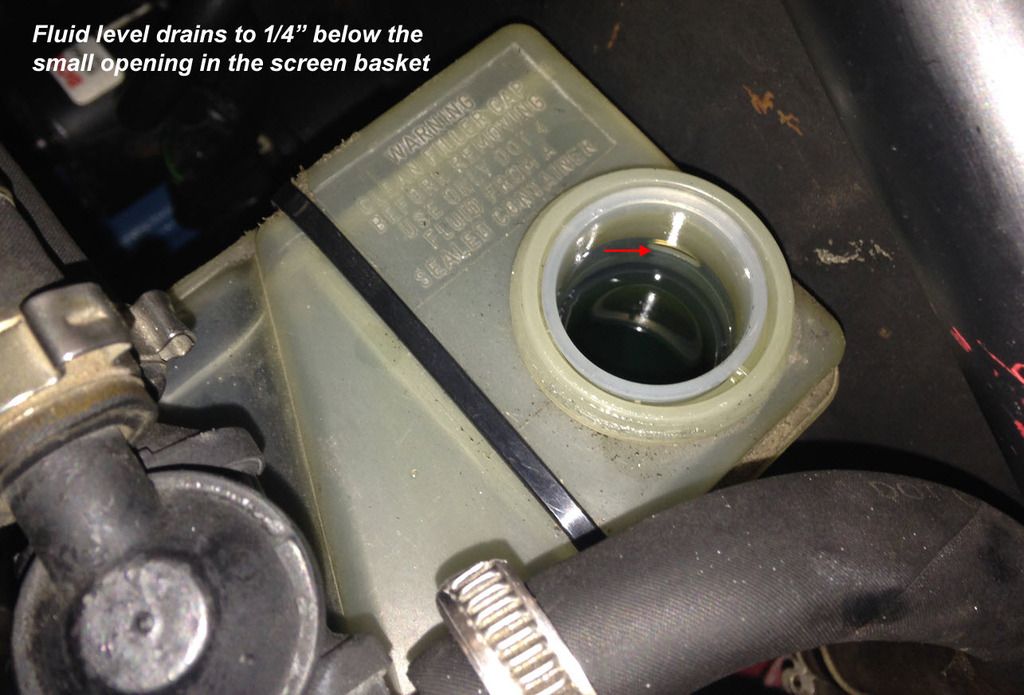[quote=“bedmonds” post=80581]are you saying that you have to keep adding fluid after driving or after it sits?[/quote
Here’s the play-by-play:
The issue started during a Practice session. The brake light came on during the session despite braking performance feeling completely fine. To play it safe, I brought the car in to have a look-see. We found the brake fluid a little low. I thought this was odd because I had just replaced the front calipers and did a four corner bleed. Pedal was firm. So we went to top of the fluid and then proceeded to watch it drain slowly to just below max. We added more fluid, it would drain to the same spot. We repeated this about 4 or 5 times. Then we re-bled the brake at all four corners. The brake pedal was rock hard the entire time and braking effectiveness was fine. Before doing what Ranger suggested (keep adding fluid), we isolated the clutch hydraulics to rule out clutch master and slave, plus clutch line leaks. The issue continued. We pulled the brake master cylinder which was dry and checked the brake booster for fluid. It too was dry. At that point we resolved to keep adding fluid to see if we could make it pool up somewhere and finally the reservoir stopped exhibiting the "draining’ behavior, holding right at Max. We poured in nearly an entire can of fluid. With shaky confidence in my braking ability, I took to the track and qualified the car for the race. There were no issues with braking. Pedal remained rock hard for the entire session.
During the race, I was tagged in the passenger quarter/rear wheel and spun. We recovered from spin and finished the race. However, after the hit I started getting an intermittent and soft pedal. It got worse as the race went on finally resulting in the pedal going to the floor every 4th or 5th braking attempt. In each case I could pump the brakes up prior to hard braking. I slowed significantly to basically keep testing the pedal for the last couple laps. After the race, the reservoir was right back at the same low level. I added fluid, it “drained” to points unknown. The key difference now is that the pedal is soft and basically goes to the floor every 3rd or 4th braking attempt.
On our Great Lakes message board, a fellow competitor recommended disconnecting the vacuum line to the brake booster to test. I’ll try that next. I’m going to go ahead and swap in new braided lines (they’re older and it’s always good to replace them from time to time). I’m also going to replace the master cylinder and swap in new calipers. I’ll also re-trace each hard line. But at this point I’m basically guessing and throwing parts at the car.
Thanks for your posts and questions. I think this is a good discussion and with your help we’ll get this sorted.



